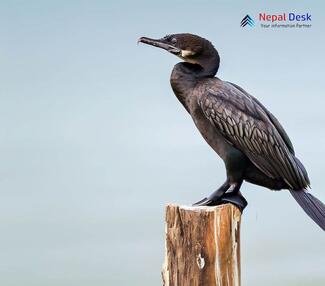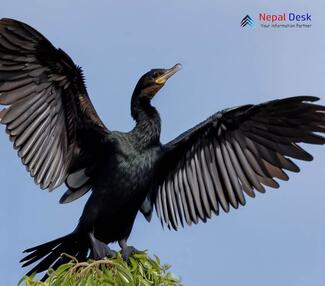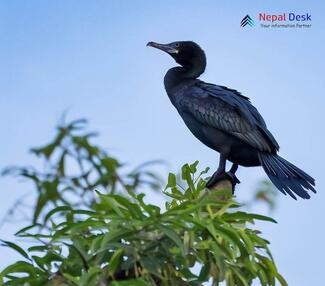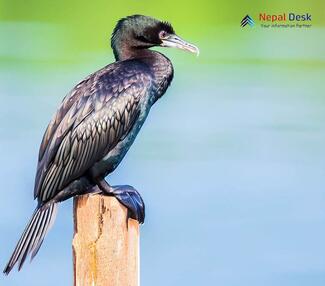Nestled in the heart of the Himalayas, Nepal is home to a diverse range of bird species that captivate bird watchers and nature lovers alike. Among these avian wonders is the Little Cormorant (Microcarbo niger), a fascinating bird with unique features and behaviors. In this article, we'll dive into the details of this remarkable bird and discuss its presence in Nepal.
The Little Cormorant: An Overview
The Little Cormorant, scientifically known as Microcarbo niger, is a relatively small waterbird that belongs to the family Phalacrocoracidae. Measuring about 50-55 cm in length and weighing around 450-650 grams, this dark-colored bird is characterized by its slender body, short bill, and long tail.
One of the striking features of the Little Cormorant is its blue-green eyes, which contrast beautifully with its dark plumage. While swimming, these birds can often be seen diving underwater as they search for fish, their primary food source.
Distribution and Habitat
Little Cormorants are widely distributed across South Asia and Southeast Asia. Their range extends from Pakistan in the west through India, Sri Lanka, Bangladesh, Nepal, Myanmar, Thailand, Laos, Cambodia, Vietnam, and Malaysia to Indonesia in the east.
In Nepal, the presence of Little Cormorants has been recorded mainly in lowland wetlands such as marshes, lakes, and rivers situated in the Terai region. They prefer freshwater bodies with an abundance of aquatic vegetation that support a rich supply of fish.
Behavior and Feeding Habits
These skillful hunters are excellent divers capable of catching fish both underwater and at the surface. They are known to be solitary hunters but may also come together in small groups to cooperatively encircle fish schools before diving in for the catch.
Once they have caught their prey using their sharp hooked bill, Little Cormorants usually return to a nearby roost where they spread their wings to dry in the sun. This drying behavior is characteristic of cormorants, as their feathers are not as water-repellent as those of other waterbirds.
Breeding and Conservation
The breeding season for Little Cormorants typically occurs between June and August in Nepal. Nesting takes place in trees or shrubs near water bodies, often as part of mixed-species colonies with other waterbirds such as herons or egrets. Clutch sizes range from three to five eggs, with both parents sharing incubation duties.
Currently listed as "Least Concern" on the IUCN Red List, Little Cormorants are fairly common and not considered to be at immediate risk of extinction. However, habitat loss and degradation due to expanding agriculture and urbanization could pose future threats if not carefully managed.
In conclusion, the Little Cormorant serves as a fascinating subject for bird enthusiasts visiting Nepal and highlights the diverse avian life found within this incredible country. To catch a glimpse of these intriguing waterbirds, consider exploring the wetlands of the Terai region for an unforgettable experience.




